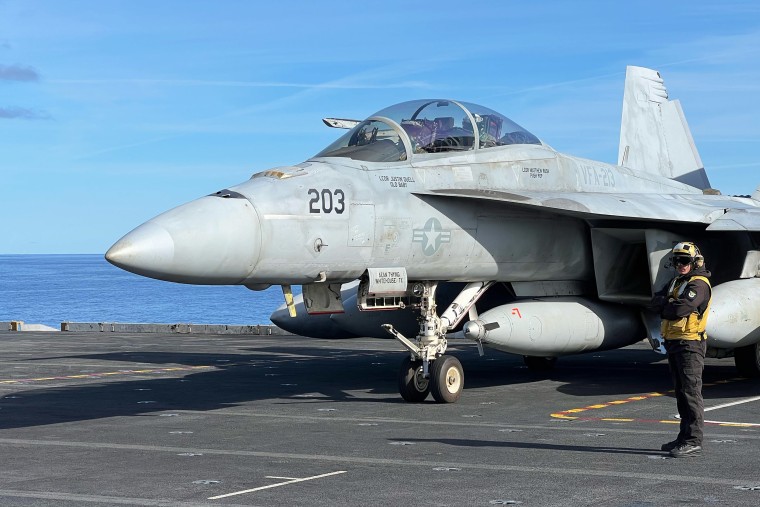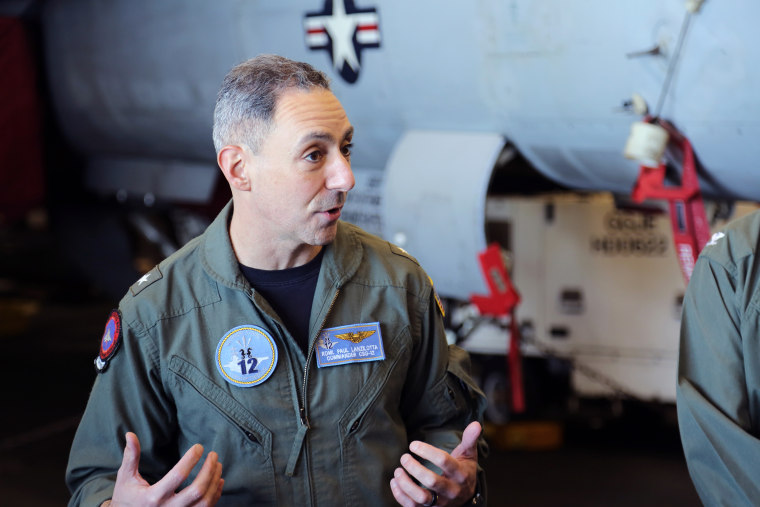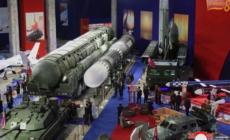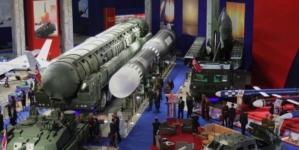-
Caesars Sportsbook Promo Code NEWSWK20X: Claim Top NFL Week 5 Sign-Up Bonus - 3 mins ago
-
'These games come down to one or two plays' — Alex Rodriguez on Mariners Game 1 loss to Tigers - 16 mins ago
-
Zac Brown engaged to Kendra Scott, plans to blend their families together - 33 mins ago
-
Vikings’ Carson Wentz Questionable to Return With Concerning Injury - 41 mins ago
-
South Africa vs. USA: How to Watch, Odds, U-20 Preview - about 1 hour ago
-
Alison Arngrim calls ‘Little House’ Season 3 episode creepy on podcast - about 1 hour ago
-
Kim Jong Un Announces North Korea Response to US Troop Deployment - about 1 hour ago
-
New Caledonia vs. France: How to Watch, Odds, U-20 Preview - 2 hours ago
-
Lions Get Brutal Injury News Hours Before Bengals Matchup - 2 hours ago
-
Saudi Arabia vs. Norway: How to Watch, Odds, U-20 Preview - 2 hours ago
Onboard a U.S. aircraft carrier as tensions rise over Russian incursions into NATO airspace
ABOARD THE USS GERALD R. FORD, The North Sea — America’s newest and largest aircraft carrier, the USS Gerald R. Ford may be in an undisclosed location in the North Sea off the coast of Norway, but it is at the center of one of NATO’s largest deployments this week.
With a series of unprecedented Russian incursions into NATO members’ airspace setting off alarm bells throughout Europe, the nuclear-powered carrier has been launching squadron after squadron of fighter jets as part of the multinational operation known as Neptune Strike.
Two NATO officials, who asked for anonymity to discuss sensitive operational matters, told NBC News the jets were taking off for assignments somewhere in Eastern Europe where tensions have been high after a spate of Russian incursions.
Nerves jangled further Wednesday when German Defense Minister Boris Pistorius told his country’s parliament, the Bundestag, that Russia continued to test the line and overflew a German warship in recent days.
A German military official who spoke on the condition of anonymity because the person was not allowed to publicly discuss sensitive military matters, confirmed that Russian jets flew close to the frigate called Hamburg. He added that the ship, which is currently operating in the Baltic Sea, was taking part in Neptune Strike, among other things.
The flyby came two days after NATO met to discuss Russia’s recent violation of Estonian airspace with three MiG-31 fighter aircraft, after Estonia requested consultations under Article 4 — a mechanism that prompts urgent talks among allies.
And earlier this month, there was also widespread anger after a number of Russian drones entered Polish airspace during an attack on Ukraine where President Vladimir Putin’s forces have been at war for more than three and a half years. A drone also entered Romanian airspace.

The U.S. and its allies have been weighing a tougher response toward the Kremlin; NATO leaders gathered at the United Nations General Assembly in New York this week condemned the Kremlin for a spate of “escalatory” incidents and vowed to defend the alliance.
President Donald Trump also said Tuesday that NATO countries should shoot down Russian military aircraft if they enter their airspace as he met with his Ukrainian counterpart, Volodymyr Zelenskyy. Pressed on whether the U.S. would back up NATO allies in such a situation, Trump said “it depends on the circumstance.”
Heading to a summit with Putin in Alaska last month, Trump said he wanted a ceasefire. Since then, Moscow has expanded its drone and missile attacks on Ukrainian cities, while seemingly ignoring his overtures for further dialogue to end the conflict.
Meanwhile, out at sea, the level of military cooperation seems unimpeded by political currents as the Ford takes part in Neptune Strike. NATO has said it is not a military exercise, instead calling it an “enhanced vigilance activity.”
On the Ford, it was all systems go as squadron after squadron of F-18 fighter jets took off and landed within minutes of each other. The pace on the flight deck was frenetic aboard the nuclear-powered ship, which weighs around 100,000 tons and has a crew of around 4,500 to 4,700.
No ship in the U.S. fleet can launch more jets faster. The dramatic thump of the ship’s four electromagnetic catapults which shoot them into the sky is constant and can be heard throughout the ship.
“Several of those aircraft are going a long distance to drop live weapons on a close air support range that is to the northeast of here,” the Ford carrier strike group commander, Rear Adm. Paul Lanzilotta, said after a squadron took off.
The purpose of the “activity” is to demonstrate large-scale coordination in multiple theaters, NATO says. It has been run several times a year since it started in 2020.
Lanzilotta also stressed that this week’s maneuvers were not a response to recent events in Eastern Europe, but had been planned long in advance. This is part of the core message that NATO intends to send, he said.
“We’re not in an action-reaction mode,” he said. “NATO, as you know, is a defensive alliance and that is what we are doing. We’re proving that out and showing it in the way that we planned months ago.”
Protected by Navy F-18 and Dutch air force F-35 fighter jets overhead and French and other Allied ships nearby, as well as launching planes quickly, the Ford can also land them within minutes of clearing the runway.
As they come in to land, the 20-ton jets hook onto a series of wires on the aft end of the deck, before they are quickly moved out of the way by tow trucks and other machinery as another one sets down.

Teams in green, yellow and white vests scurry around orchestrating the operation, which can be incredibly dangerous, if not fatal, with so much hardware around.
At a briefing, a model of a Russian Sukhoi Su-27 fighter jet hung behind Capt. David Dartez, commander of the Ford’s air wing. Asked if that meant Russia was on their minds, he said they trained for any possible adversary.
He also said he had conducted flights as far as Finland, which shares an 800-mile border with Russia.
“It’s kind of fuel-dependent, but we have lots of friendly allies,” he said, adding that he had refueled from a Finnish aircraft while on NATO maneuvers.
“I won’t say where I was, but he gave me gas because I was very far away from the aircraft carrier… at that moment, over 1,000 miles,” he said.
Source link


























